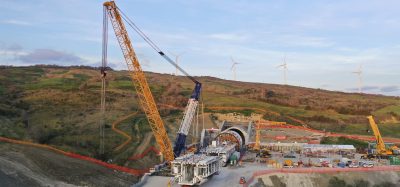The call for tender
Posted: 14 February 2006 | | No comments yet
AlpTransit Gotthard is creating a flat rail link for future travel through the Alps. At the heart of the new transalpine rail route is the world’s longest tunnel – the 57km Gotthard Base Tunnel. This pioneering achievement of the 21st Century will bring major improvements to travel and transportation systems in the heart of Europe.
AlpTransit Gotthard Ltd. was established in May 1998 as a subsidiary of Swiss Federal Railways Ltd. As constructor, it is responsible for the overall task of building the Gotthard Base Link between Zurich and Lugano with the agreed quality, as rapidly as possible, and at minimum cost.
The exceptional construction conditions and demanding operational requirements for the 57km-long Gotthard Base Tunnel constitute a major challenge to all those involved in preparing and implementing the project. What is needed for the technical railway equipment is to take proven solutions and to optimise them for the special tunnel conditions. Future maintenance and renewal are going to have a major impact on the safety and cost-effectiveness of the installations. For that reason, particular attention needs to be paid to the maintenance concept for the technical systems right from the early stages of project planning and implementation.
AlpTransit Gotthard Ltd. has published the installation work to be performed in the Swiss Official Gazette of Commerce and in the Tenders Electronics Daily, Supplement to the Official Journal of the European Union in November 2005.
The work involved covers the entire tunnel section of the line (2 x 57km) as well as the new open-air access to it in the north and south (totalling about 10 kilometres of multiple track). The junctions connecting the new line to the Swiss Federal Railways existing Gotthard Line are not part of this package and are to be the subject of a separate call for tenders.
The capital outlay involved amounts to approximately €600 million. Potential contractors are expected to submit their tenders by August 2006.
The tender procedure
In calling for tenders for the entire new line (tunnel plus open sections), AlpTransit Gotthard Ltd. is looking for a general contractor able to assume responsibility for the whole of the technical railway equipment.
The technical railway equipment encompasses all components and systems closely related to the technical system of the railways and hence of central importance for future operations.
The basis for all call for tenders is a construction project for the railway technical systems drawn up by AlpTransit Gotthard Ltd. In addition to this official proposal, it is possible for the contractor to put forward alternatives. Innovation is very much desired for the technical railway equipment and the contractor is encouraged to leverage all the know-how possible. It is, however, important to ensure that the new line is not turned into a pilot project or test route for all sorts of different systems.
For that reason, it has been laid down that any system, component or technique that departs from the standards practised by the SBB/CFF/FFS must have been accepted elsewhere with comparable conditions to the Gotthard Base Tunnel project.
Whenever the contractor proposes an alternative, the official proposal must always be contractually agreed as a fallback, and it must remain feasible for it to be implanted.
The tender documents are available exclusively in German language and are structured as follows:
- A: Terms and Conditions for the Call for Tenders (Bestimmungen zur Ausschreibung)
- I: Contract for Work and Labour (Werkvertrag)
- II: Special Provisions (Besondere Bestimmungen)
- III: Specifications (Leistungspakete)
The technology
The term ‘railway technical systems’ comprises all the components and systems that are closely associated with the railway itself as a technical system and are thus going to play a central role in its future operation. The design specifications are determined by the project environment as illustrated in figure 4.
The technical solution developed by AlpTransit Gotthard fulfils all the project design specifications and consists fundamentally in:
- Twin tubes providing total physical separation between the two tracks
- Two crossovers at about 1/3 and 2/3 of the tunnel length
- Intermediate access galleries in Amsteg, Sedrun and Faido, two additional multifunctional stations will be integrated by the Sedrun and Faido crossovers which will house power supply and signalling equipment, as well as specially ventilated ‘emergency stations’ where passengers can be evacuated under optimum conditions
- Cross passages which link the running tunnels every 324 metres. These passages will be used for evacuating passengers in case of emergencies and include some technical equipment necessary for the operation of the line
The complexity of the tunnel system, the unusual climatic conditions as well as the exacting demands to be met for availability and reliability require the application of a minimal principle. Simply, manageable installations ensure the functionality of the overall system. Every item of equipment needs maintenance and can fail. The infrastructure is restricted to the essential elements.
The supply of trains with electricity must be guaranteed at all times. To date, there are no tunnel overhead contact wires anywhere in the world in operation at the same time for passenger trains travelling at a speed of over 160km/h and for the enormous electrical loads of freight trains.
The railway electricity supply installations will ensure the feeding of traction energy from external power plants through three substations in Amsteg, Faido and Bodio. In the substations, the high-tension of 132,000 volts of the Swiss Federal Railways (SBB) transmission network will be transformed down to the 15,000 volts required by the locomotives.
The overhead contact wires’ task will be to ensure the supply of electricity to the trains. In order to supply high-speed trains and heavy freight trains (up to 4,000 t) simultaneously, the overhead contact wires in each tunnel bore must be able to carry currents of up to 2,000 amps.
The telecommunications installations will comprise the transmission network, the switching network, the data network and the radio system. In keeping with the philosophy of ‘simple and efficient’, all the railway-specific data transmission requirements will be covered by a single, extensive telecommunications network. This network will be fully integrated into the rest of the SBB network. A comprehensive radio network complying with the GSM (Global System for Mobile Communication) standard will be installed.
The electrical installations will supply every power consumer in the transport system with current of a certain quality and quantity. By means of multiple feed points from the portals and the three intermediate access points of the Gotthard Base Tunnel, a very high availability of electricity supply will be guaranteed.
The technical equipment in the Gotthard Base Tunnel will lead (for the majority) to automatic operation, limiting interventions by humans and the subsequent potential hazards to a minimum. The standardised ERTMS / ETCS (European Rail Traffic Management System / European Train Control System) stage 2 will be used on AlpTransit Gotthard, by means of which the travel commands are no longer communicated by optical signals but by radio directly in the train’s driving cab. This system is currently being introduced on the SBB and other European railways.
The intended mixed-traffic operation with high-speed expresses and heavy freight trains make great demands on the precision and long working life of the track. Therefore, only track systems that have been tried out and proven, over the years will be installed on the new AlpTransit Gotthard lines.
The railway technical equipment is intended to be installed rapidly after completion of each raw tunnel construction section. In this way, the line can be put into operation as early as possible.
The conditions in the Gotthard Base Tunnel represent a major challenge for the installation of the electromechanical equipment. The necessary installation rate must be considerably above that achieved in the more recent railway tunnels in Switzerland. The highest demands will be on the logistics for the installation of the railway technical equipment because the tunnel is only accessible from the portals.
The climatic conditions will be extreme on account of the mountain cover of up to 2,300m. In the central sections of the Gotthard Base Tunnel, high temperatures of up to 40°C are to be expected. In order to achieve justifiable climatic conditions during the installation phase from the occupational medicinal aspect a special cooling and ventilation system will be necessary.
Prospects
As the schedule looks at the time of writing, the submittal of quotation is due in August 2006 and the contract will be awarded in the second half of 2007. This will allow the line to commence operation at the end of 2015.
The new rail links through the Alps will be Switzerland’s link with the future. They will enable the railways to provide attractive services at the heart of the international passenger and freight transportation system – under the motto “fast, economical, safe”. The new high-speed lines are an impressive comeback for the railways in Europe: the means of transport of the future.
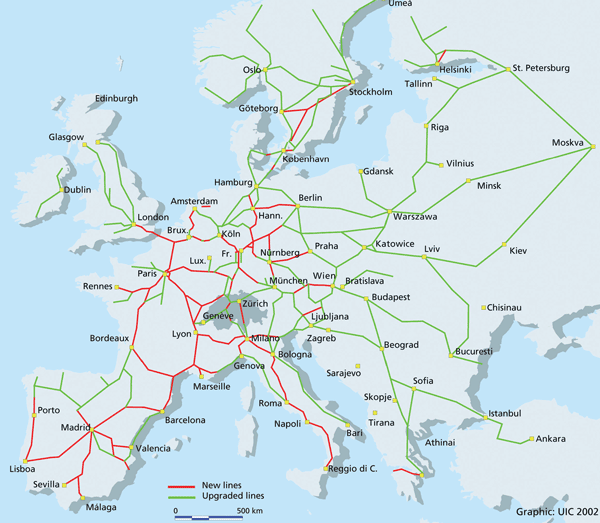

Figure 1: The European high-speed rail network in 2020
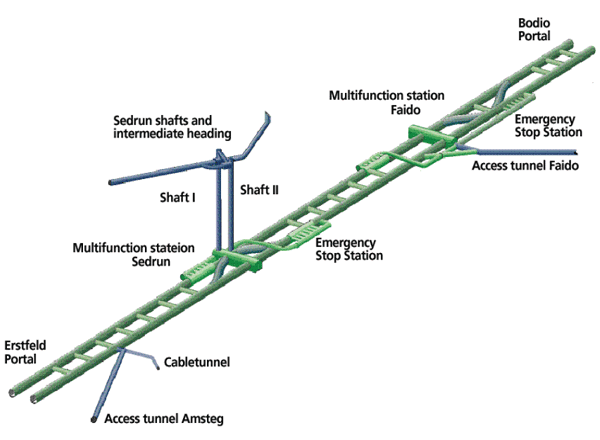

Figure 2: Schematic diagram of the tunnel system and the various accesses to the Gotthard Base Tunnel
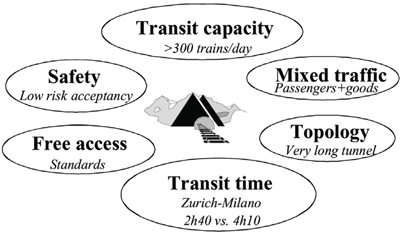

Figure 3: Design specifications
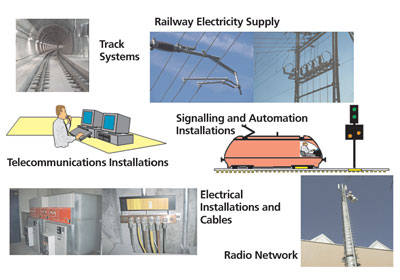

Figure 4: Technical systems
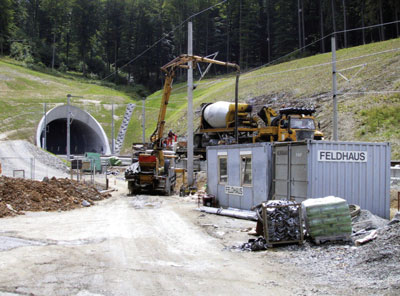

Figure 5a: Logistics during installation phase
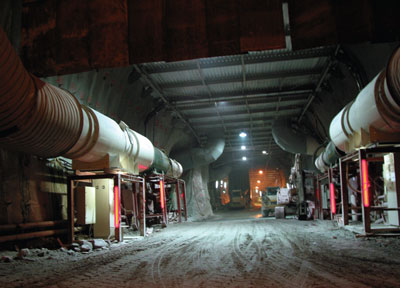

Figure 5b: Cooling ventilation system at the installation phase
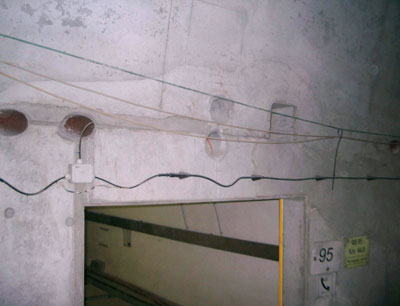

Figure 5c: Electrics at the installation phase
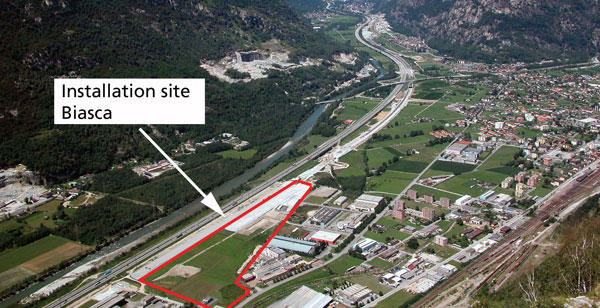

Figure 6: The installation site at Biasca






